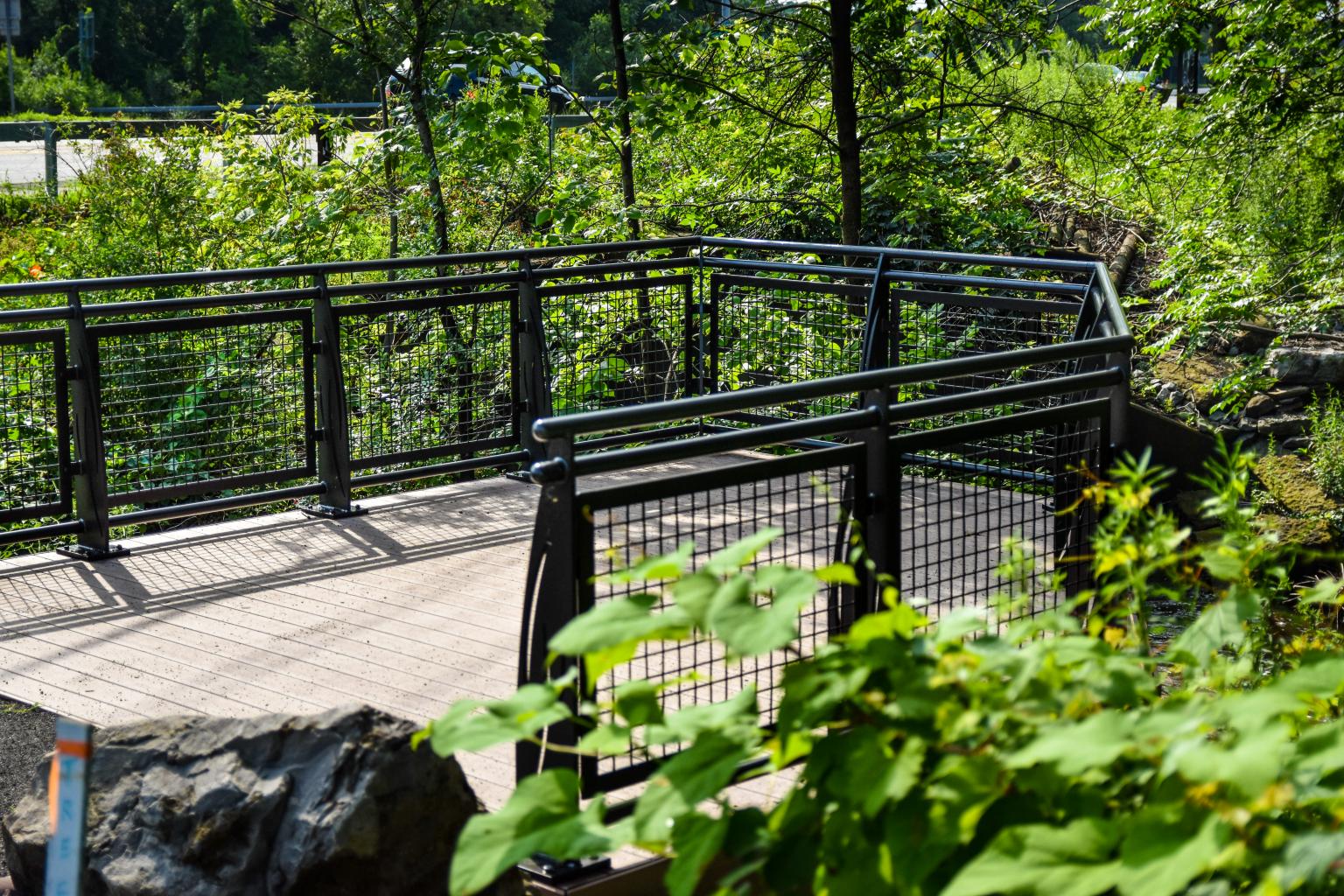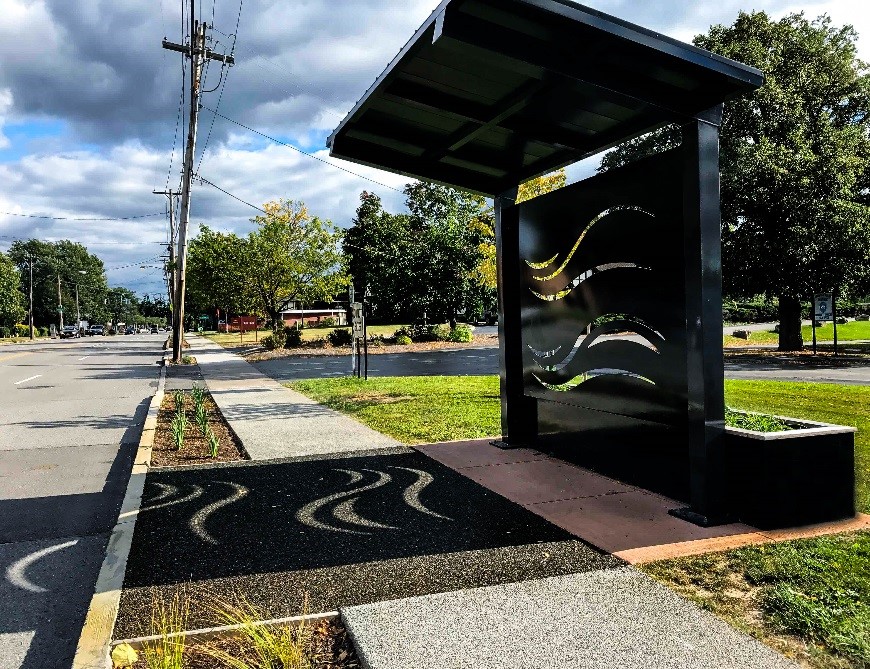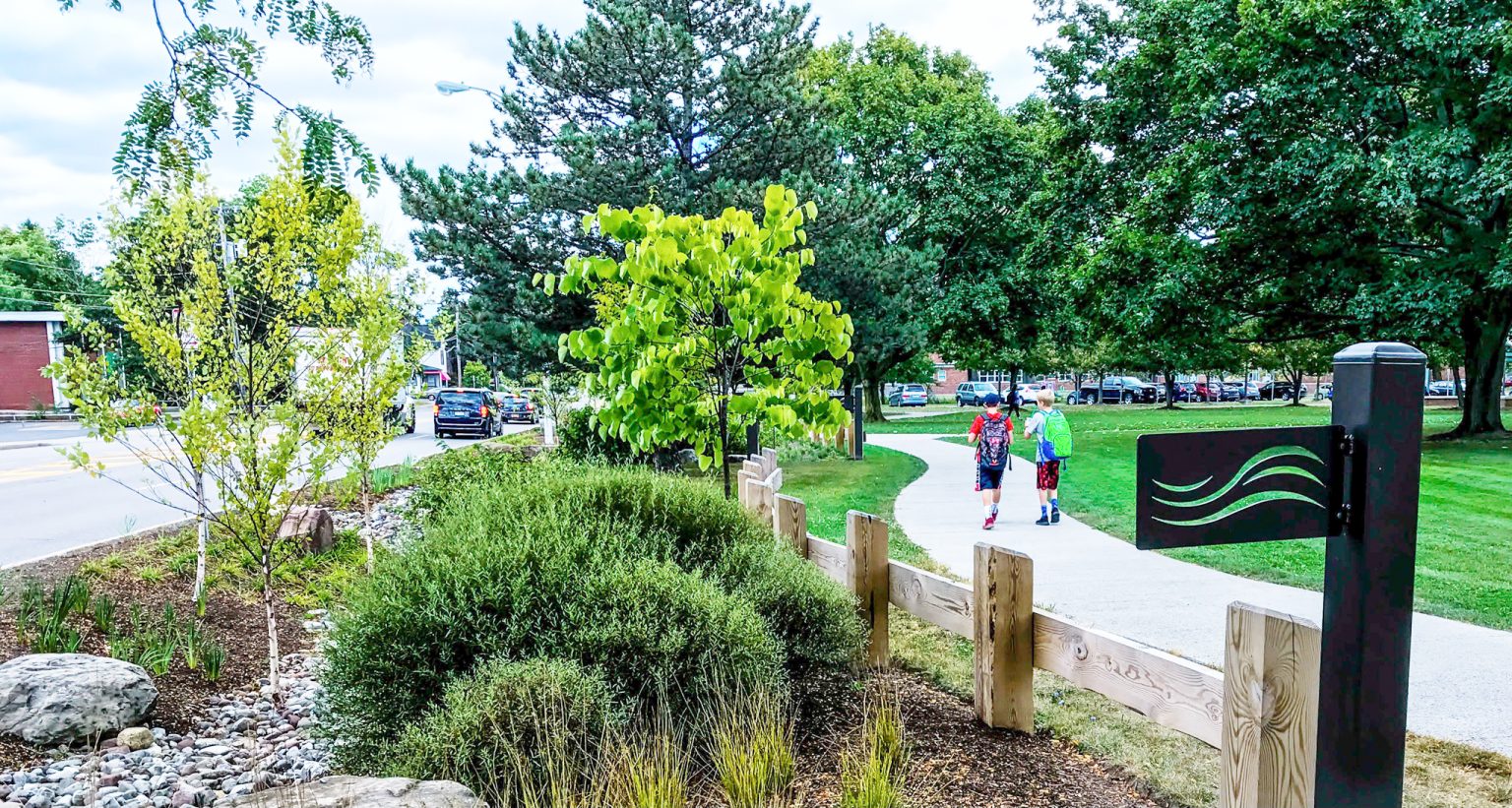Monroe Avenue Green Street Retrofit
What was the Challenge?
The Town of Brighton is purposefully evolving as a sustainable community by prioritizing energy conservation, natural resource protection, and waste reduction. As part of their Vision Plan, it was noted that stormwater management, large amounts of impervious surfaces, and lack of mitigation practices to control runoff and flooding were big problems on Monroe Avenue. The Town earned funding from the Green Innovation Grant Program (GIGP) with a goal of re-integrating natural systems into the one-mile Monroe Avenue corridor from 12 Corners to Westfall Road.
How did Barton & Loguidice provide a solution?
Through the use of rain gardens, vegetated swales, and the introduction of permeable paving surfaces, B&L helped the Town of Brighton to retrofit the Monroe Avenue corridor with cohesive and sustainable green infrastructure technologies. The project merged stormwater management, urban ecology, and active design into a plan for a complete urban corridor environment that integrates transit use and active transportation, thereby reducing consumption of fossil fuels and greenhouse gas (GHG) emissions.
Site improvements that ran near the main campus of the Brighton Central School District addressed both pedestrian safety and environmental sustainability. These included re-locating sidewalks away from busy streets, widening the sidewalks to 7 feet to accommodate shared use, using porous concrete to reduce stormwater runoff, implementing rain gardens that enhance stormwater management and serve as a buffer between cars and people, and creating an improved pedestrian realm to encourage walking and riding.
Why was the project a success?
People, wildlife, and the environment in general benefit from this project. The green infrastructure practices used along Monroe Avenue have significantly reduced impervious surfaces and decreased pollutant loading to Allen’s Creek and Buckland Creek. Localized flooding and drainage issues have been addressed, and new sidewalk construction has improved pedestrian mobility and ADA compliance. The new rain gardens utilize native plant species that are adaptive to urban conditions. Four-season visual interest and biodiversity have been improved, further encouraging pedestrian use of the corridor. The project integrates transit use and active transportation, which reduces fossil fuel consumption and GHG emissions. Lastly, streetscape enhancements at key transit stops encourage transit use along the corridor, while encouraging residents to walk and bike through the neighborhood.
Project At a Glance
Location
New York
Services
- Climate Action
- Community Planning
- Landscape Architecture
- Trails & Greenways
- Watershed Science & Stormwater Management
Project Awards
- ASLA New York Upstate Design Award

Related Articles
August 29, 2022
Like All Municipal Utility Assets, Green Infrastructure Must Be Maintained
Read ArticleRelated Projects
At Barton & Loguidice we’re passionate about our clients, our work, and making a positive impact on the world around us. Learn more about our mission and culture.
Firm Overview





